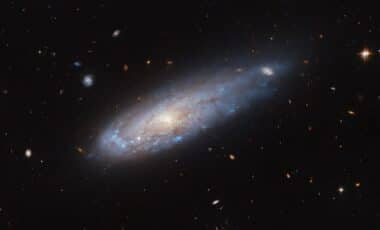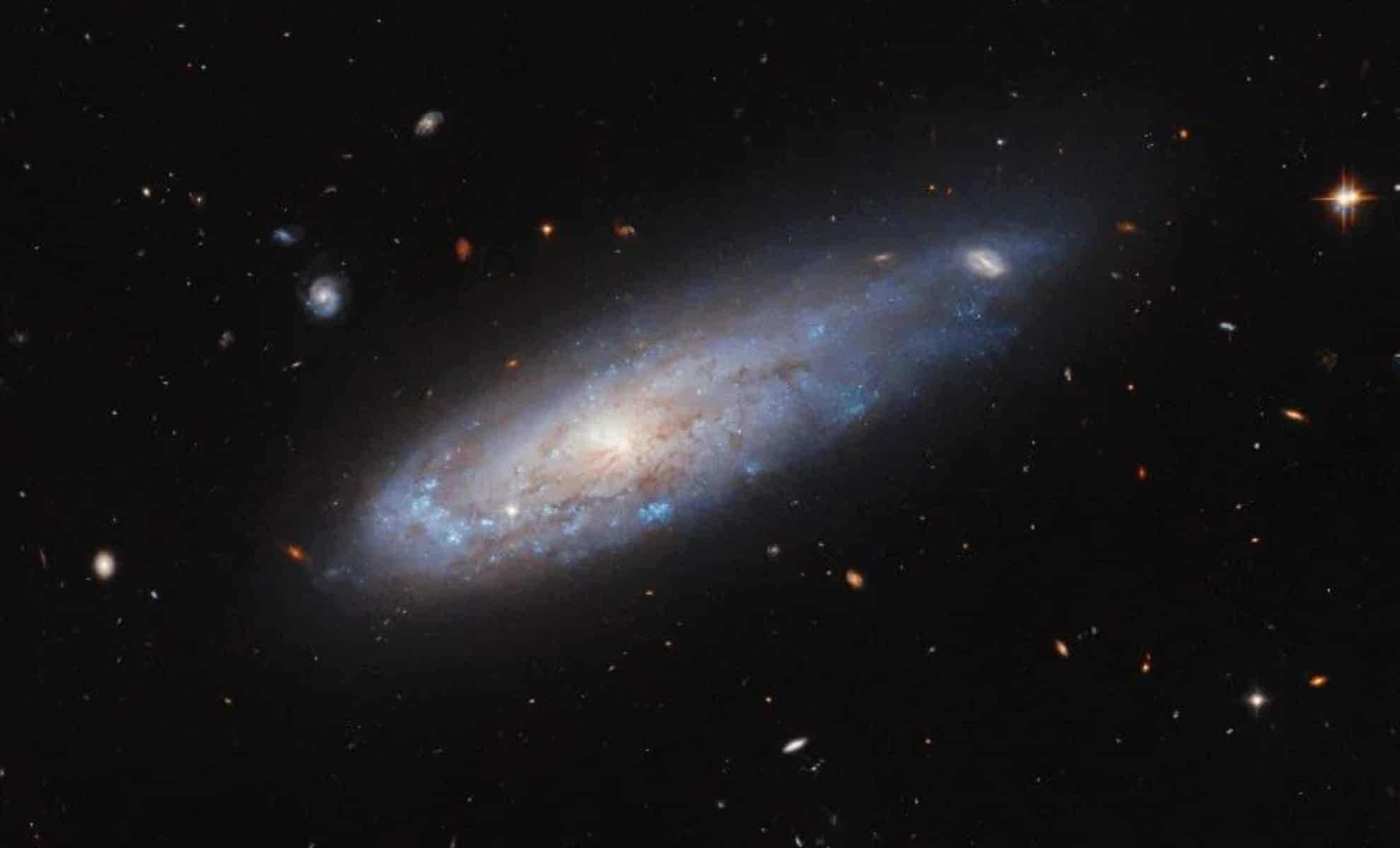The Hubble Space Telescope has captured a stunning image of the spiral galaxy IC 3225, zooming through the dense Virgo galaxy cluster like a cosmic cannonball. The galaxy is undergoing ram pressure stripping, a process that removes interstellar gas as it moves through the cluster’s hot, gas-filled environment, leaving behind a tail of gas and triggering changes in star formation.
Hubble Captures Dramatic Image of a Galaxy Racing Through Space, Shaped by Cosmic forces

The Hubble Space Telescope has captured a dramatic image of the spiral galaxy IC 3225, a celestial body seemingly launched through space like a cosmic cannonball.
Located within the dense Virgo galaxy cluster, about 100 million light-years from Earth, IC 3225's striking appearance offers scientists a glimpse into the intense gravitational forces and interactions shaping galaxies in crowded environments. As the galaxy speeds through this cluster, it undergoes a process known as ram pressure stripping, which removes gas from its disk, leaving behind a trail that resembles a comet’s tail.
The Dynamics of the Virgo Galaxy Cluster
IC 3225 is part of the massive Virgo galaxy cluster, home to over 1,300 galaxies. This cluster is a densely populated region filled with hot gas known as the intracluster medium, which creates significant gravitational interactions between galaxies. As galaxies move through this medium, they experience intense ram pressure, stripping away their interstellar gas and distorting their shapes. The effect of this phenomenon can be clearly observed in the Hubble image of IC 3225, where the galaxy’s disk appears compressed on one side, indicating that it has likely undergone this process in the past.
Astronomers analyzing the image noted that IC 3225 has been shaped by powerful external forces: “The galaxy looks as though it’s been launched from a cannon, speeding through space like a comet with a tail of gas streaming from its disk behind it,” they said. Although the galaxy is not currently near the cluster’s core, where ram pressure would be most extreme, its appearance suggests that it has already experienced significant gas stripping in the past, a hallmark of galaxies moving through dense environments.

Ram Pressure Stripping and Its Effects on Star Formation
The process of ram pressure stripping is critical to understanding how galaxies evolve in clusters. As IC 3225 moves through the intracluster medium, the friction between the galaxy and the hot gas surrounding it strips away the interstellar gas that normally fuels star formation. This loss of gas can halt star formation over time, leading to changes in the galaxy’s structure and appearance.
Astronomers have observed that the side of IC 3225 facing the direction of motion has experienced an uptick in star formation, likely due to the compression of gas on that side. This is a common feature in galaxies undergoing ram pressure stripping. Meanwhile, the opposite end of the galaxy appears stretched, further evidence of the gravitational forces at play. As the galaxy continues its journey through the cluster, it may experience additional transformations, potentially reshaping its disk and altering its star formation rates.
The Cosmic Forces Reshaping Galaxies
The image of IC 3225 serves as a vivid reminder of the powerful forces at work on a cosmic scale. In addition to ram pressure, interactions with other galaxies in the Virgo cluster likely play a role in shaping IC 3225’s structure. The crowded environment of the cluster means that close encounters between galaxies are not uncommon, and these gravitational interactions can lead to further distortions. Astronomers suggest that a near-collision with another galaxy could have contributed to IC 3225’s current appearance, further emphasizing the dynamic nature of galaxy clusters.
As one astronomer remarked, “The sight of this distorted galaxy is a reminder of the incredible forces at work on astronomical scales, which can move and reshape even entire galaxies.” The Hubble Space Telescope, with its powerful imaging capabilities, continues to capture these dramatic cosmic interactions, providing new insights into the mechanisms that govern galaxy evolution.



